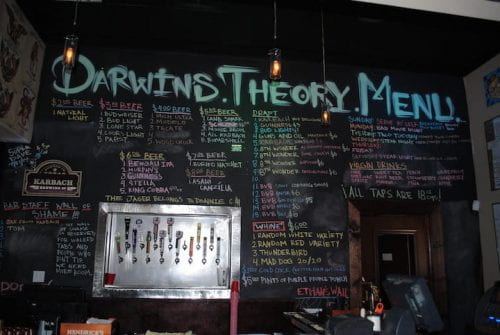Question: Can we exploit the fact that the tumor is an evolving ecosystem of competing mutant sub-populations of cells trying to gain advantage over a fitness landscape?
Our group is using evolutionary game theory models of the tumor-immune ecosystem to both predict and control this dynamical system governed by the Darwinian laws of natural selection
Cancer is an evolutionary process taking place within a genetically and functionally heterogeneous population of cells that traffic from one anatomical site to another via hematogenous and lymphatic routes. The population of cells associated with the primary and metastatic tumors evolve, adapt, proliferate, and disseminate in an environment in which a fitness landscape controls survival and replication. Tumorigenesis occurs as the result of inherited and acquired genetic, epigenetic and other abnormalities accumulated over a long period of time in otherwise normal cells. Before we can typically detect the presence of a tumor, the cells are already competing for resources in a Darwinian struggle for existence in tissues that progressively age and evolve. Evolutionary game theory is perhaps the best quantitative framework for modeling evolution and natural selection. It is a dynamic version of classical game theory in which a game between two (or more) competitors is played repeatedly, giving each participant the ability to adjust their strategy based on the outcome of the previous string of games. While this may seem like a minor variant of classical (static) game theory, as developed by the mathematicians von Neumann and Morgenstern in the 1940s, it is not. Developed mostly by the mathematical biologists John Maynard Smith and George Price in the 1970s, this dynamic generalization of classical game theory has proven to be one of the main quantitative tools available to evolutionary biologists (if coupled with a fitness landscape) whose goal is to understand natural selection in evolving populations. In this biological context, a strategy is not necessarily a deliberate course of action, but an inheritable trait. Instead of identifying Nash equilibria, as in the static setting, one looks for evolutionary stable strategies (ESS) and fixation probabilities of a subpopulation. This subpopulation might be traced to a specific cell with enhanced replicative capacity (high fitness), for example, that has undergone a sequence of mutations and is in the process of clonally expanding. A relevant question is what is the probability of fixation of that subpopulation? More explicitly, how does one subpopulation invade another in a developing colony of cells? One game, the prisoner’s dilemma game, has played a central role in cancer modeling (as well as other contexts such as political science and economics). Our lab has been developing cancer models of various types using this basic paradigm as the engine that drives tumor evolution.
Here are four papers to read where you can learn more about our approach. See full publication list for others.
- J. West, L. You, J. Zhang, R.A. Gatenby, J.S. Brown, P.K. Newton, A.R.A. Anderson, Towards multi-drug adaptive therapy (pdf) Cancer Research (2020)
- PK Newton, Y Ma, Nonlinear adaptive control of competitive release and chemotherapeutic resistance Phys. Rev. E 99 022404 (2019)
- J West, Z Hasnain, P Macklin, PK Newton, An evolutionary model of tumor cell kinetics and the emergence of molecular heterogeneity driving Gompertzian growth SIAM Review 58(4) 716-736 (2016)
- J West, Z Hasnain, J Mason, PK Newton, The prisoner’s dilemma as a cancer model Conv. Sci. Phys. Onc. 2(3) (2016)


